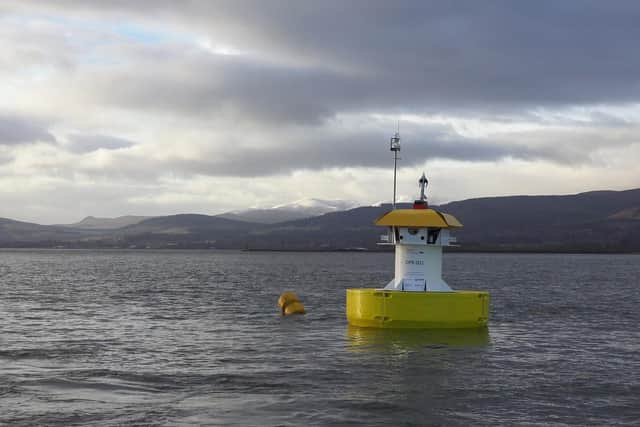Offshore charger for electric boats completes sea trials off Scottish coast
The Oasis Power Buoy, an offshore mooring and charging station powered by green energy, has been put through the first in a series of rigorous tests at the Port of Cromarty Firth.
Aberdeen-based firm Oasis Marine Power, which designed and developed the buoy, said the initial stage of testing has gone well.
Advertisement
Hide AdAdvertisement
Hide AdOriginally designed to service crew transfer vessels for offshore wind farms, the pioneering device will be capable of charging any hybrid or fully electric boats.
It is the first of its kind globally to reach sea trials and has the potential to revolutionise renewable energy use for the maritime industry.
Current diesel-powered maintenance vessels account for the largest share of carbon dioxide emissions from an operational wind farm.
The Power Buoy makes zero-emission boats viable for the industry, helping tackle climate change and bring down costs.


George Smith, director of Oasis Marine Power, which specialises in renewable energy for the marine environment, said the firm is delighted with the results of the testing.
“We have proven that the concept is viable and are now working to optimise the design,” he said.
“What we have achieved is a world first, and this is a great progression towards dramatically reducing the carbon footprint of the maritime industry.”
The buoys will initially be installed at offshore wind farms where electric and hybrid crew transfer vessels can top up their batteries at sea, making them a fully credible alternative to traditional diesel-powered boats.
Advertisement
Hide AdAdvertisement
Hide AdThey will receive power from the wind turbines or other renewable energy sources to provide zero-emission energy and have a dual function as an offshore mooring and charging point.
The Oasis Power Buoy will now be undergoing further testing and optimisation, including sustained sea trials.
Scotland currently has six operational offshore wind farms or demonstration project: Robin Rigg, in the Solway Firth; Beatrice, in the Moray Firth; Aberdeen Bay; Levenmouth, in the Firth of Forth; HyWind, off the Aberdeenshire coast; and Kincardine, also in Aberdeenshire.
But the sector is set for a massive expansion in coming years, with around 25 gigawatts of new offshore wind due to come online if all the schemes proposed under the recent ScotWind seabed leasing round come to fruition.
A message from the Editor:
Thank you for reading this article. We’re more reliant on your support than ever as the shift in consumer habits brought about by coronavirus impacts our advertisers.
If you haven’t already, please consider supporting our trusted, fact-checked journalism by taking out a digital subscription.
Comments
Want to join the conversation? Please or to comment on this article.
